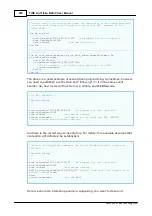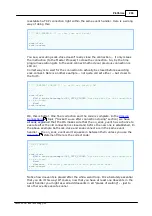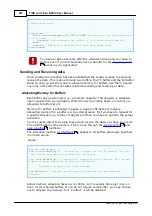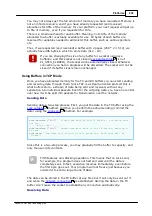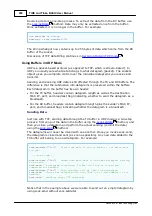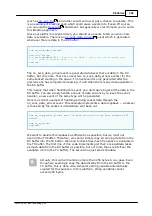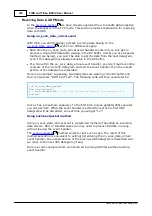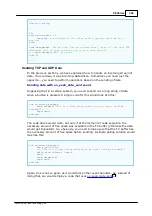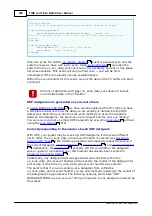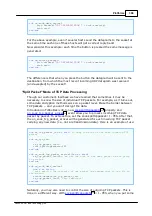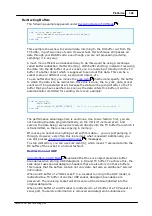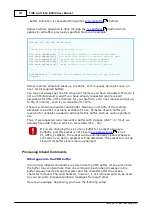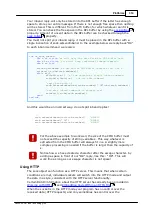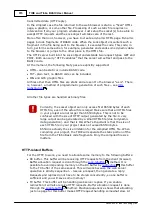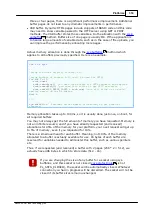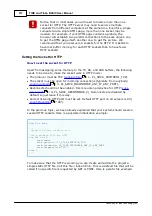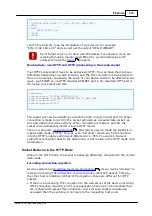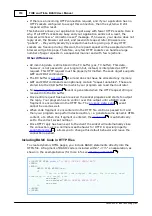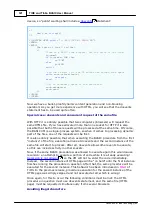
308
Platforms
©2000-2008 Tibbo Technology Inc.
Redirecting Buffers
The following example appeared under
:
sub
on_sock_data_arrival
sock.setdata(sock.getdata(sock.txfree))
sock.send
end
sub
This example shows how to send all data incoming to the RX buffer out from the
TX buffer, in just two lines of code. However fast, this technique still passes all
data through your BASIC code, even though you are not processing (altering,
sampling) it in any way.
A much more efficient and advanced way to do this would be using a technique
called buffer redirection (buffer shorting). With buffer shorting, instead of receiving
the data into the RX buffer of your socket, you are receiving it directly into the TX
buffer of another object which is supposed to send out this data. This can be a
socket (same or different one), a serial port object, etc.
To use buffer shorting, you invoke the
method and specify the buffer
to which the data is to be redirected. Once this is done, the on_sock_data_arrival
event won't be generated at all, because the data will be going directly to the TX
buffer that you have specified. As soon as the data enters this buffer, it will be
automatically committed for sending. Here is an example:
sub
on_sys_init
sock.num=
0
sock.redir(PL_REDIR_SOCK0)
' This is a loopback for socket 0.
end
sub
The performance advantage here is enormous, due to two factors: first, you are
not handling the data programmatically, so the VM isn't involved at all. And
second, the data being received is received directly into the TX buffer from which it
is transmitted, so there is less copying in memory.
Of course you cannot do anything at all with this data -- you are just pumping it
through. However, very often this is precisely what is needed! Additionally, you
can still process
(messages).
To stop redirection, you can use sock.redir(0), which means "receive data into the
RX buffer of the socket in a normal fashion".
Redirection and UDP
explained that the sock object preserves buffer
boundaries when storing UDP datagrams in RX and TX buffer. To achieve this, the
sock object uses special datagram headers that are also stored in these buffers.
This means that the buffers contain not only data, but also an additional "service"
information.
When an RX buffer of a "UDP socket" (i.e. a socket running in the UDP mode) is
redirected to a TX buffer of another UDP socket, datagram boundaries are
preserved. The receiving socket will still send out the data subdivided into the
original datagrams.
When an RX buffer of a UDP socket is redirected to a TX buffer of a TCP socket or
serial port, the service information is removed and datagram boundaries are
301
346
309
299


